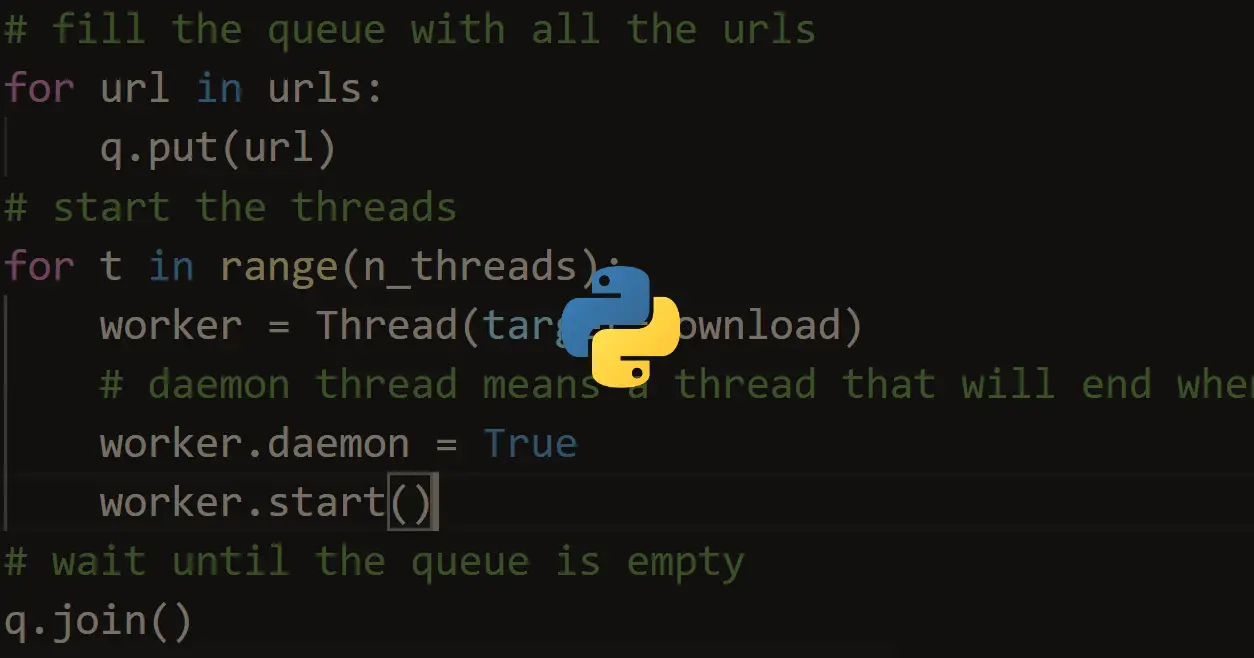Python|Threading: Thread-based parallelism for beginner
Tutorial from RealPython[1]
Python threading allows you to have different parts of your program run concurrently and can simplify your design. If you’ve got some experience in Python and want to speed up your program using threads, then this tutorial is for you![1:1]
What’s a Threading?
Threading is a separate flow of execution. In bash, you can run a background process by adding a symbol & at the end of commands. In python, we can achieve this with the example below.
As you might expect, if you run the codes below, thread_function(3) will be started at the end of thread_function(4)
|
0 1 2 3 0 1 2
But if we execute it in a threading or background process, they can run simultaneously.
|
0 0 1 1 2 2 3
This is how we expect the background process, or daemon threads, to be performed.
join()
Some times, we’d like waiting for the threads. By doing so, we can call .join() to do so.
By uncomment x.join(), we can get the same result as the first.
|
0 1 2 3 0 1 2
Working in a loop
|
0 0 0 0 1 1 1 2 2 3
ThreadPoolExecutor
|
0 is Down 0 from 1 0 from 2 1 is Down 0 from 3 0 from 4 1 from 2 2 is Down 0 from 5 1 from 4 1 from 3 1 from 5 2 from 4 2 from 3 3 is Down 0 from 6 1 from 6 2 from 5 3 from 4 4 is Down 0 from 7 2 from 6 1 from 7 3 from 5 2 from 7 3 from 6 4 from 5 5 is Down 0 from 8 3 from 7 1 from 8 4 from 6 2 from 8 4 from 7 3 from 8 5 from 6 6 is Down 0 from 9 1 from 9 5 from 7 2 from 9 4 from 8 3 from 9 5 from 8 6 from 7 7 is Down 4 from 9 6 from 8 5 from 9 6 from 9 7 from 8 8 is Down 7 from 9 8 from 9 9 is Down
The code creates a ThreadPoolExecutor as a context manager, telling it how many worker threads it wants in the pool. It then uses .map() to step through an iterable of things, in your case range(3), passing each one to a thread in the pool.[1:2]
TEST
|
Python|Threading: Thread-based parallelism for beginner









